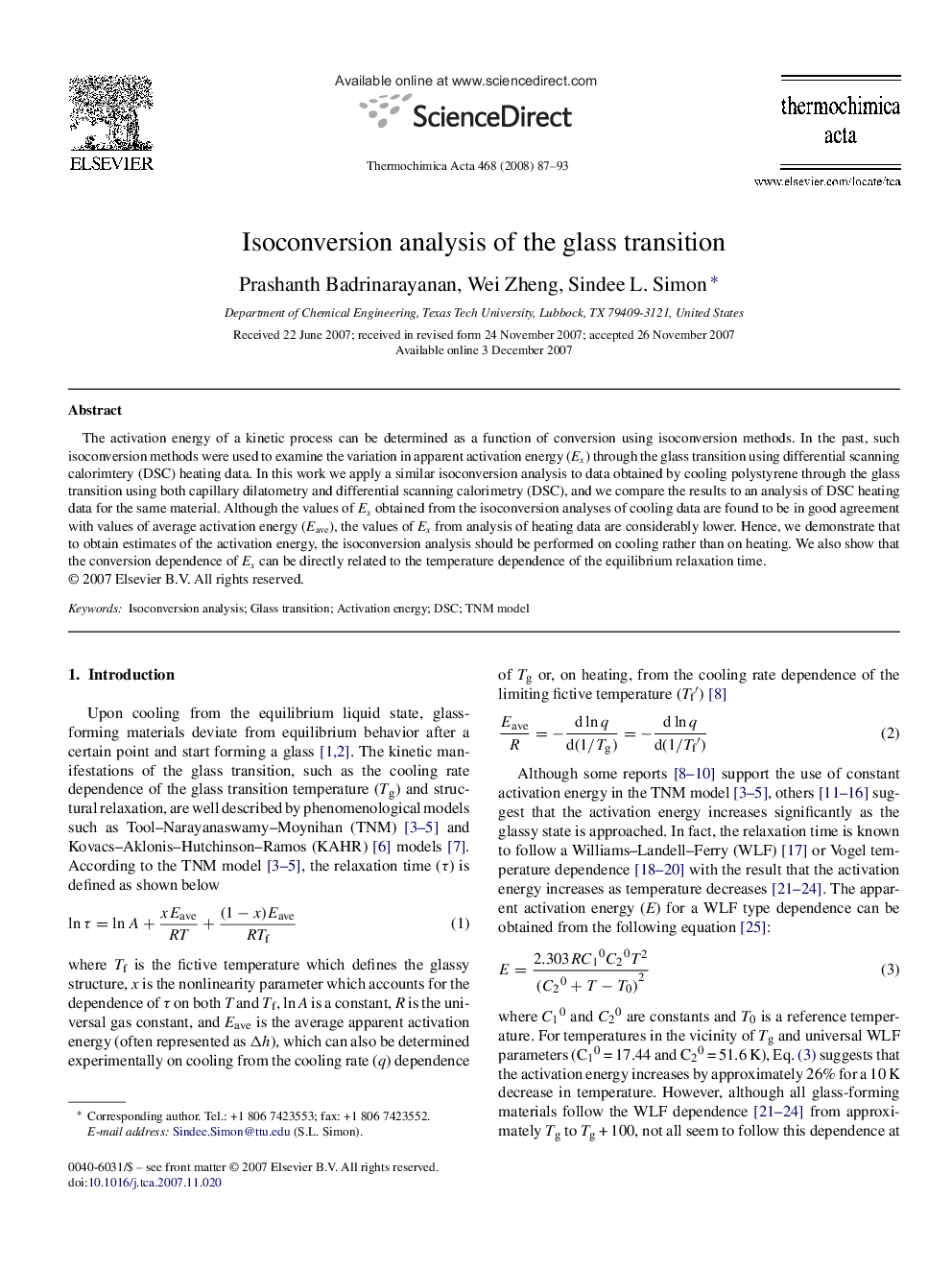| Article ID | Journal | Published Year | Pages | File Type |
|---|---|---|---|---|
| 675348 | Thermochimica Acta | 2008 | 7 Pages |
The activation energy of a kinetic process can be determined as a function of conversion using isoconversion methods. In the past, such isoconversion methods were used to examine the variation in apparent activation energy (Ex) through the glass transition using differential scanning calorimtery (DSC) heating data. In this work we apply a similar isoconversion analysis to data obtained by cooling polystyrene through the glass transition using both capillary dilatometry and differential scanning calorimetry (DSC), and we compare the results to an analysis of DSC heating data for the same material. Although the values of Ex obtained from the isoconversion analyses of cooling data are found to be in good agreement with values of average activation energy (Eave), the values of Ex from analysis of heating data are considerably lower. Hence, we demonstrate that to obtain estimates of the activation energy, the isoconversion analysis should be performed on cooling rather than on heating. We also show that the conversion dependence of Ex can be directly related to the temperature dependence of the equilibrium relaxation time.
